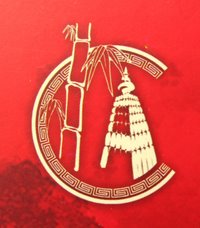 The Chinese temple at Achipur, which is being renovated and the deities in the sanctum sanctorum
The Chinese temple at Achipur, which is being renovated and the deities in the sanctum sanctorumTimes City , page - 2
Chinese donate 50 Lakhs for temple facelift
Jhimli Mukherjee Pandey & Monotosh Chakraborty
Achipur, a hamlet on the banks of the Hooghly, is just like any other Bengal village. But 300 years ago, this village, 30 km from Taratala, bustled with activity and was dominated by the Chinese. This was the first Chinese settlement in the country. Not a single Chinese can be seen here today, though. But every Chinese New Year’s Day on February 3 and for the rest of that month, Achipur turns into a mini Chinatown. Thousands gather at the Chinese temple here, especially on Sundays, to usher in the new year. This year, members of Kolkata’s Chinese community have pooled in nearly 50 lakh to restore the temple and build boarding and lodging facilities for the community.
East India Company documents show that a Chinese trader called Atchew Tong sailed into the village in the second decade of the 18th century and settled down. Others soon followed him. Atchew started a sugar plantation attached with a mill. The documents dating back to the governor generalship of Warren Hastings state that Atchew was a wealthy sugar trader who was permitted to operate from a vast tract of land off Budge Budge.
No trace of the sugar mill that Atchew ran successfully with at least 100 Chinese men and women remains. However, the “earth and fertility” temple that he built way back in 1718 still remains, though it has badly needed conservation and restoration for a long time. Its roof has developed cracks and leaks, damaging many of the tiny prayer rooms arranged in two rows on the sides of the main temple. Last February, members of the Chinese community, primarily from the Gee Hing Church at Tangra, gathered at the temple and decided that donations would be collected so that the temple could be saved and other facilities built. Word soon spread and Chinese people not only from Tangra but also from near Tiretti Bazar came forward to contribute.
Work on restoring the temple is now on in full swing. A bamboo scaffolding supports the centuries old roof as portions get repaired and conserved. Conservation architects have been roped in for the job. Even the floor had been damaged because of damp and is being completely being done up with expensive marble. “We are extremely happy that people have come forward and donated freely so that we could organise the restoration and conservation on such a grand scale. While the church initiated the project, it is actually a community project. It is our oldest landmark and we have deep respect for the place and the temple, which is also special in nature,” said S K Au, a spokesperson of the committee that is looking after the restoration.
The sanctum sanctorum of the earth and fertility temple consists of two gods of ancient origin — Thuti Kung and Thuti Fo. Thuti in Chinese means the Earth and the temple is rooted in the Chinese tantra cult. Locals, who are mostly Muslims, call it the Khuda-Khudi temple and revere it. Even the caretaker is a local Muslim villager, who would tell you that Chinamantala — as the place around the temple is called — is feared and respected by locals because of the magical powers of the temple.
“The two gods are older than the temple and Atchew Tong brought them with him from China. At the temple, you will also find the old Chinese custom of fortune-telling through sticks. Our priests live in the temple for the whole of February so that the community members can get their fortunes read through traditional play of sticks,” explained Au.








